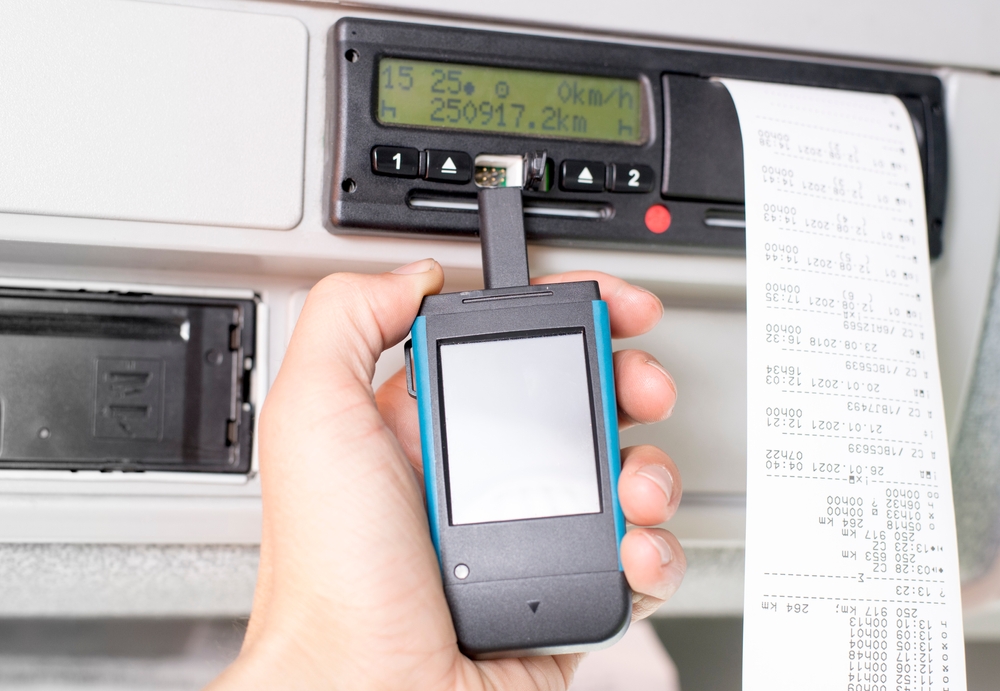
DOT Inspection Week, officially known as the CVSA International Roadcheck, is an annual high-visibility, high-volume roadside inspection and enforcement event targeting commercial motor vehicles (CMVs) across North America. This initiative is led by the Commercial Vehicle Safety Alliance (CVSA) in partnership with the Federal Motor Carrier Safety Administration (FMCSA), and law enforcement agencies throughout the U.S., Canada, and Mexico.
The event typically takes place over three consecutive days in May or June, and during this period, thousands of certified inspectors conduct inspections at weigh stations, inspection sites, and roadside locations. The purpose is to ensure that CMVs and their drivers comply with federal safety regulations and to remove unsafe vehicles or drivers from the road immediately.
Each year, the CVSA designates a special emphasis area—a particular aspect of compliance that will receive heightened scrutiny. Previous years have focused on issues such as:
- Hours-of-Service (HOS) compliance
- Brake systems
- Lighting violations
- Tire safety
- Cargo securement
These inspections are often Level I comprehensive inspections, which are the most thorough and include both driver and vehicle components. However, Level II, III, and V inspections may also be conducted depending on the situation.
Why does this matter to fleets? DOT Inspection Week can significantly affect your fleet’s:
- CSA (Compliance, Safety, Accountability) scores
- Driver records and retention
- Insurance premiums and risk profile
- Vehicle downtime due to Out-of-Service (OOS) orders
For carriers and fleet managers, this week isn’t just about surviving—it’s an opportunity to demonstrate operational excellence, reinforce a safety-first culture, and proactively manage compliance.
In this guide, we’ll walk you through what to expect, how to prepare, and what actions your fleet should take before, during, and after DOT Inspection Week to remain compliant and confident.
What Happens During DOT Inspection Week
During DOT Inspection Week, law enforcement agencies and certified inspectors across the U.S., Canada, and Mexico ramp up roadside inspection activity. This enforcement surge takes place over a dedicated three-day period and is highly coordinated to ensure uniform standards. Inspectors set up at weigh stations, inspection checkpoints, and even conduct mobile inspections on highways and at carrier terminals.
Fleets should expect a significantly higher chance of being stopped and inspected, regardless of previous inspection history or CSA scores. Even well-maintained fleets are not exempt from random selection during this event.
Level I Inspection Focus
The majority of inspections conducted during DOT Inspection Week are Level I North American Standard Inspections—the most thorough and comprehensive type. This level involves both:
- Driver-level checks, such as credentials, logbooks, and fitness for duty
- Vehicle-level checks, examining the mechanical and safety components of the CMV
Level I inspections are designed to catch a wide range of compliance and safety issues, with the ultimate goal of removing high-risk vehicles or drivers from service.
37-Step Inspection Covering Vehicle and Driver Compliance
The Level I inspection includes a detailed 37-step procedure, covering both the human and mechanical sides of CMV operations. Key areas of focus include:
Driver Inspection Items:
- Commercial Driver’s License
- Medical Examiner’s Certificate (DOT medical card)
- Hours-of-Service logs and ELD compliance
- Drug and alcohol impairment checks
- Seatbelt use
- Driver demeanor and apparent fatigue or illness
Vehicle Inspection Items:
- Brake systems (including air brakes)
- Tires, wheels, and hubs
- Steering and suspension components
- Lighting devices and reflectors
- Windshield wipers and mirrors
- Coupling devices
- Fuel and exhaust systems
- Emergency equipment (fuse kits, fire extinguisher, reflective triangles)
Emphasis Area for the Current Year
Each year, CVSA designates a special emphasis area during DOT Inspection Week to address common violations or critical safety issues. This focus is intended to raise awareness and drive improvements in that specific area across the industry.
Common examples from previous years include:
- Cargo securement: Ensuring loads are properly restrained to prevent shifting or detachment
- Anti-lock braking systems (ABS): Inspecting for proper operation and fault codes
- Hours-of-Service: Verifying log accuracy and electronic logging device compliance
- Lighting and visibility: Checking for functional and properly placed lighting equipment
The designated focus is announced in advance, giving fleets a chance to prepare strategically and mitigate potential violations related to that category.
Inspection Outcomes
Once the inspection is complete, the inspector will issue one of the following outcomes:
- Pass with no violations: The vehicle and driver are in full compliance. Often, a CVSA decal is applied to the windshield, indicating the vehicle passed a Level I or V inspection and may not be reinspected for up to 3 months unless there is a visible defect.
- Minor violations: The driver or vehicle is not placed out of service but will receive a report listing the infractions. These violations can still negatively affect CSA scores.
- Out-of-Service designation: If critical violations are discovered—such as brake defects, driver fatigue, or expired credentials—the vehicle or driver will be immediately placed out of service until the issues are resolved.
Pass/Fail Criteria
Pass/fail status hinges on whether any critical safety violations are found. These include:
- Defective brakes or tires
- Inoperative lights
- Hours-of-service violations beyond acceptable limits
- Driver under the influence or medically unfit
- Missing or expired CDL or medical certificate
Fleet managers must understand that even a single vehicle or driver placed out of service can:
- Damage CSA scores
- Affect safety ratings
- Trigger follow-up audits or investigations
- Increase insurance premiums
Out-of-Service Violations and Implications
Out-of-service violations are among the most serious findings during inspection week. These violations mean that either:
- A vehicle is too dangerous to continue operating
- A driver is not legally permitted to drive
Immediate consequences include:
- The unit must remain out of service until repairs are completed and documented
- Delays in deliveries and scheduling disruptions
- Mandatory re-inspection in some cases
- Potential fines and compliance reviews
Long-term implications may include:
- Increased FMCSA scrutiny
- CSA percentile increases in Unsafe Driving, Vehicle Maintenance, or Hours-of-Service BASICs
- Higher DOT intervention risk
- Tarnished carrier reputation and loss of shipper trust

Key Areas Inspectors Will Evaluate
During DOT Inspection Week, certified inspectors conduct a rigorous review of both the driver and vehicle to ensure they meet all federal and state safety standards. These inspections are methodical and based on the North American Standard Inspection Program.
A. Driver-Related Checks
1. Commercial Driver’s License and Medical Card Validity
Inspectors verify that each driver holds a valid CDL appropriate for the vehicle type and cargo (e.g., Class A, B, or C with the correct endorsements such as HazMat, Tanker, etc.).
They also check for a valid Medical Examiner’s Certificate to ensure the driver is medically qualified to operate a commercial vehicle. Any expired or missing documentation can lead to the driver being placed out of service.
2. Hours-of-Service Logs and ELDs
Compliance with Hours-of-Service regulations is a major focus. Inspectors will:
- Review ELD data for accuracy and completeness
- Check for false logs, unassigned driving time, or missed rest breaks
- Validate proper login procedures and data transfer capability
Any violation of the HOS rules, especially exceeding driving limits or failing to provide accurate logs, can result in citations or out-of-service orders.
3. Drug and Alcohol Violations
Inspectors will assess whether there is any indication of drug or alcohol use, which includes:
- Observable behavior (odor, slurred speech, bloodshot eyes)
- Inquiries into recent testing compliance under FMCSA regulations
- Verifying enrollment in a random drug and alcohol testing program if required
Drivers suspected of impairment will be removed from duty immediately and referred for additional testing or enforcement action.
4. Driver Demeanor and Impairment
Inspectors are trained to observe a driver’s attitude, alertness, and physical condition. Signs of fatigue, stress, or uncooperative behavior may trigger more detailed questioning or investigation. A courteous, professional, and composed driver is less likely to raise red flags and more likely to foster a smoother inspection process.
B. Vehicle-Related Checks
1. Brakes (Including Air Brake Systems)
Brake violations are consistently one of the top reasons for vehicles being placed out of service. Inspectors will:
- Check air brake system components (chambers, hoses, slack adjusters)
- Measure brake stroke and pushrod travel
- Inspect for leaks, worn linings, and warning light functionality
Drivers may be asked to perform a brake application test or show proof of recent brake inspections.
2. Tires, Wheels, and Rims
Inspectors will examine:
- Tread depth (minimum required is 4/32” on steer tires, 2/32” on others)
- Tire inflation and damage (cuts, bulges, exposed cords)
- Wheel integrity (no cracks, rust damage, or loose/missing lug nuts)
- Matching tire types and proper pairing on dual setups
Any defect can compromise safety and result in a vehicle being taken out of service.
3. Lights and Reflectors
Proper lighting and visibility equipment are essential for safe operation. Inspections will cover:
- Headlights, taillights, brake lights, turn signals
- Marker and clearance lights
- Reflective tape placement and condition
- License plate illumination
Burned-out bulbs or missing reflectors are easily preventable violations that often lead to citations.
4. Suspension and Steering
The suspension and steering systems are checked for:
- Worn or broken springs, shocks, or hangers
- Excessive play in the steering wheel
- Leaking power steering fluid
- Missing or broken steering components (tie rods, pitman arms)
Suspension and steering issues directly affect control and stability, making them high-priority safety risks.
5. Windshield Wipers, Mirrors, and Horn
These seemingly minor components play a major role in driver visibility and control. Inspectors ensure:
- Wipers are functional and not deteriorated
- Windshield is free of major cracks in the driver’s field of vision
- All required mirrors are present and properly mounted
- Horn is operable and audible
Deficiencies here, while small, can still lead to inspection failures if they impede safe driving.
6. Emergency Equipment (Triangles, Fire Extinguisher)
Inspectors confirm that the vehicle is equipped with:
- Three reflective warning triangles or equivalent emergency signaling devices
- A properly charged and securely mounted fire extinguisher (rated at least 5 B:C)
- Spare fuses for essential electrical systems
Missing or non-functional emergency equipment is a common violation and easy to avoid with proper pre-trip checks.
Don’t let inspections disrupt your operations—prepare today with Fleetworthy and turn compliance into your competitive advantage.
Contact Fleetworthy now to ensure your fleet stays consistently safe, compliant, and road-ready during DOT Inspection Week and beyond.















